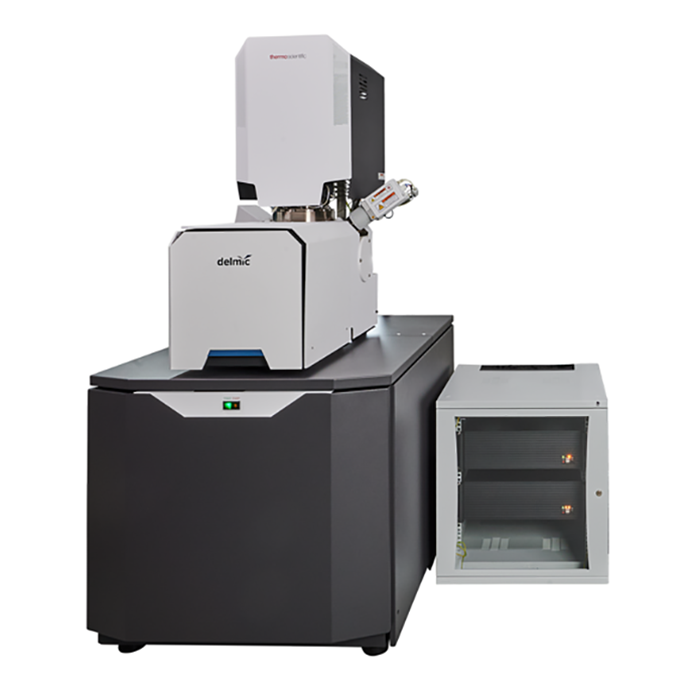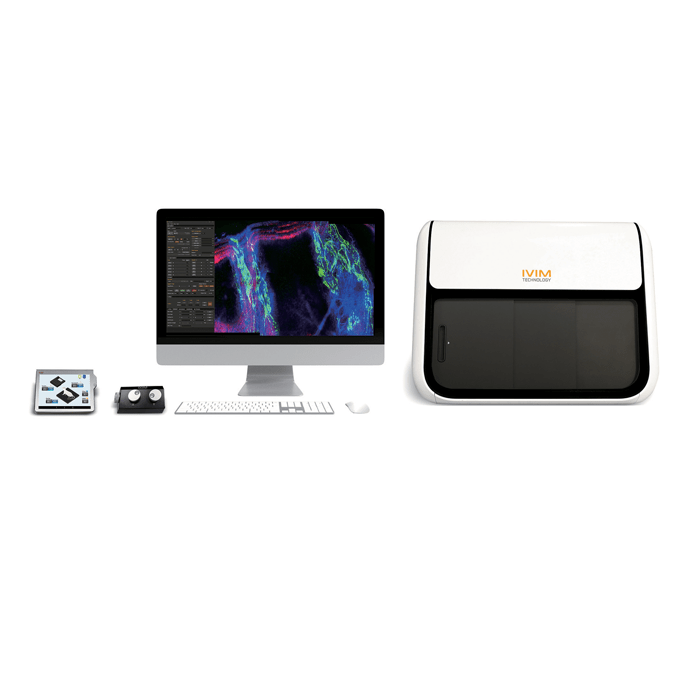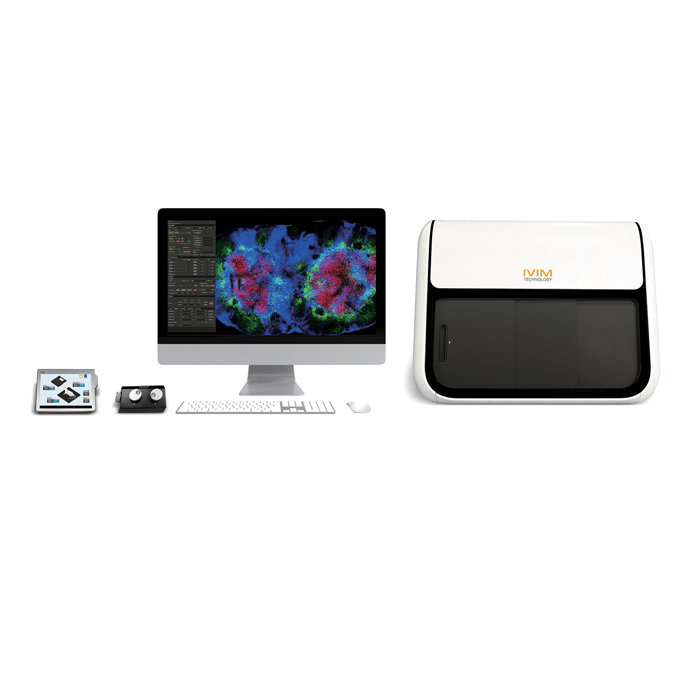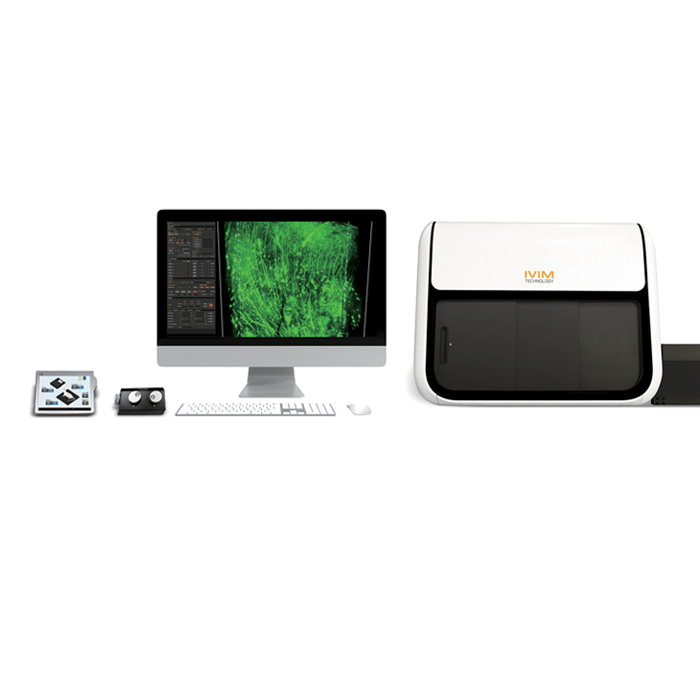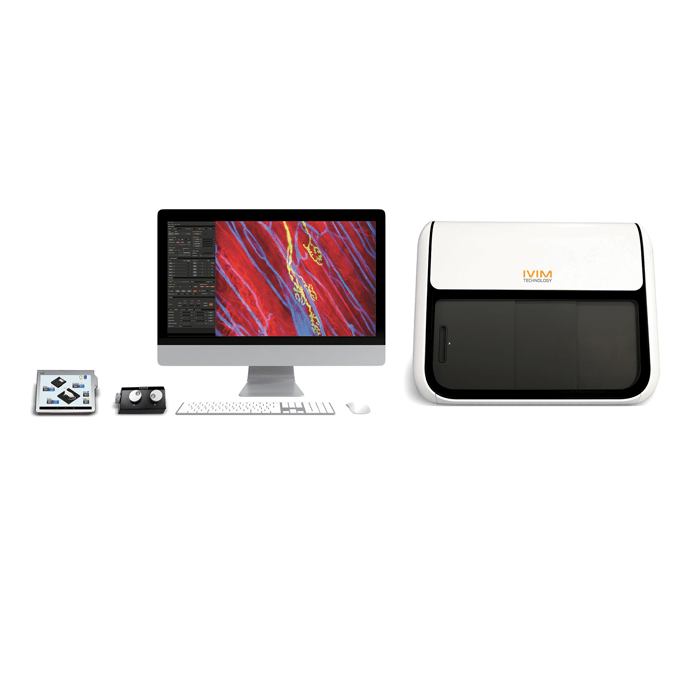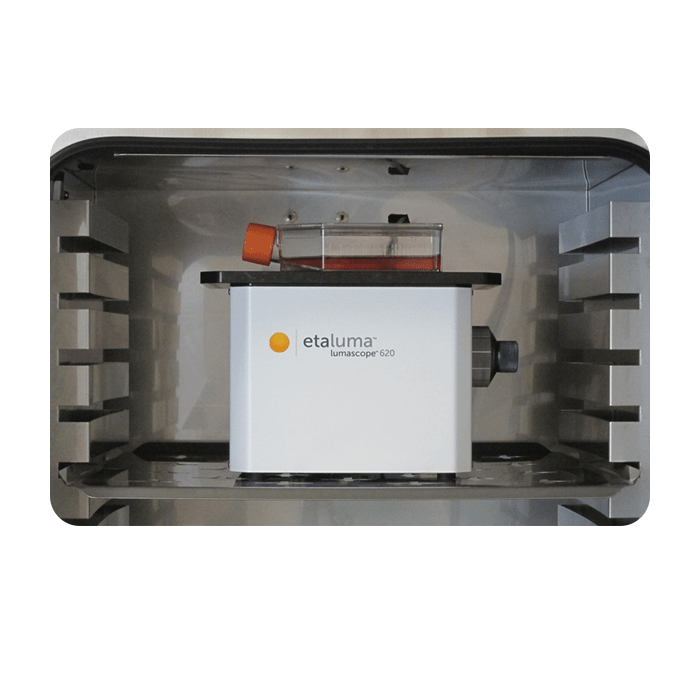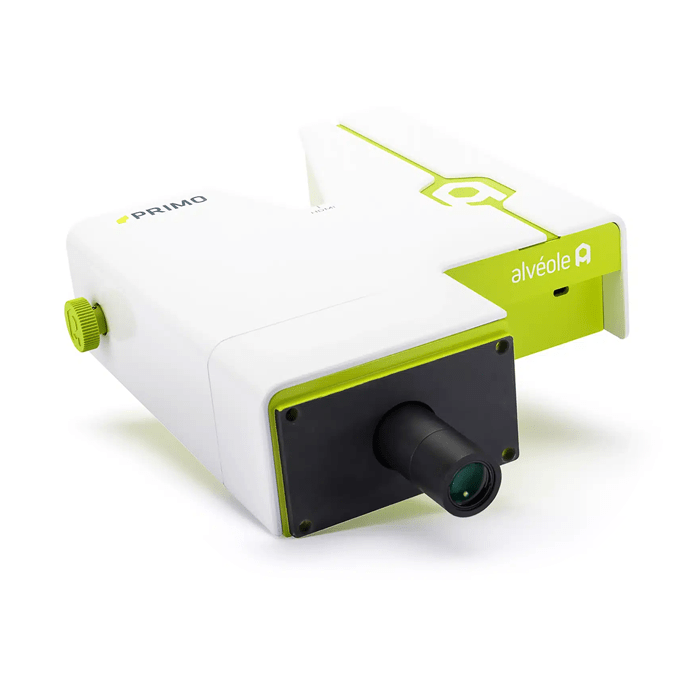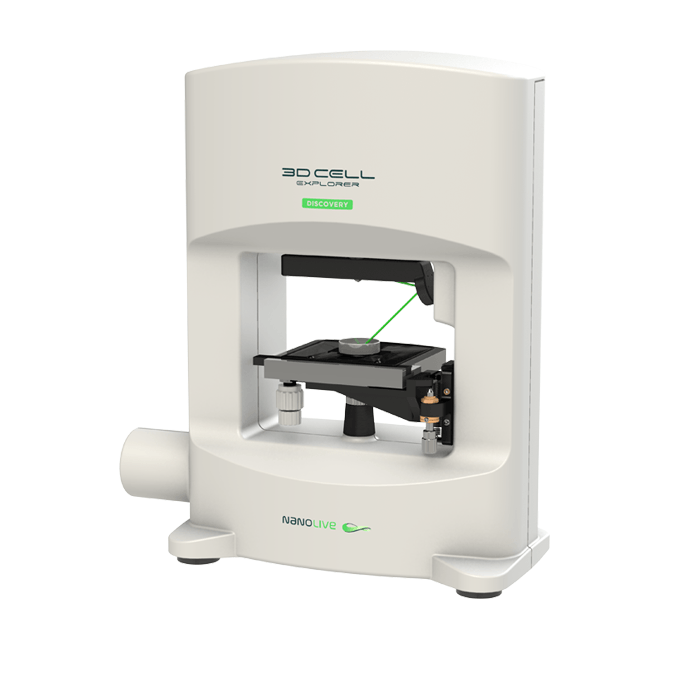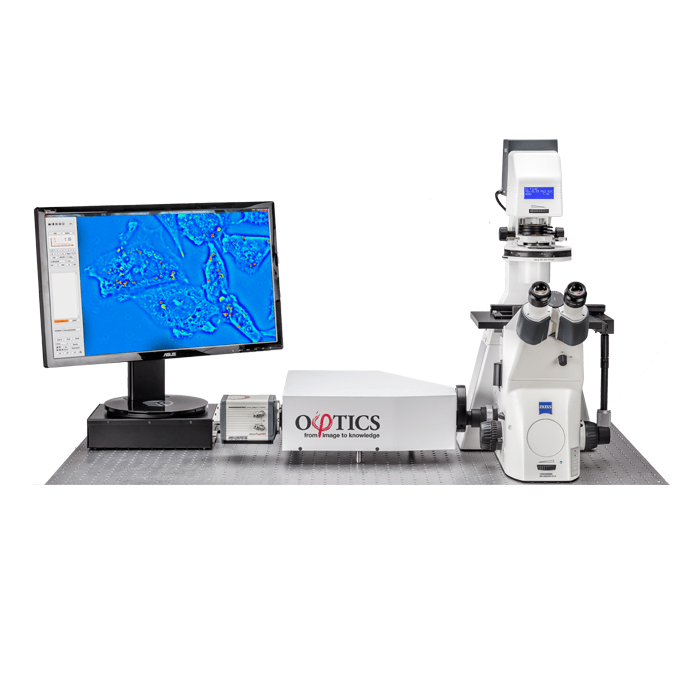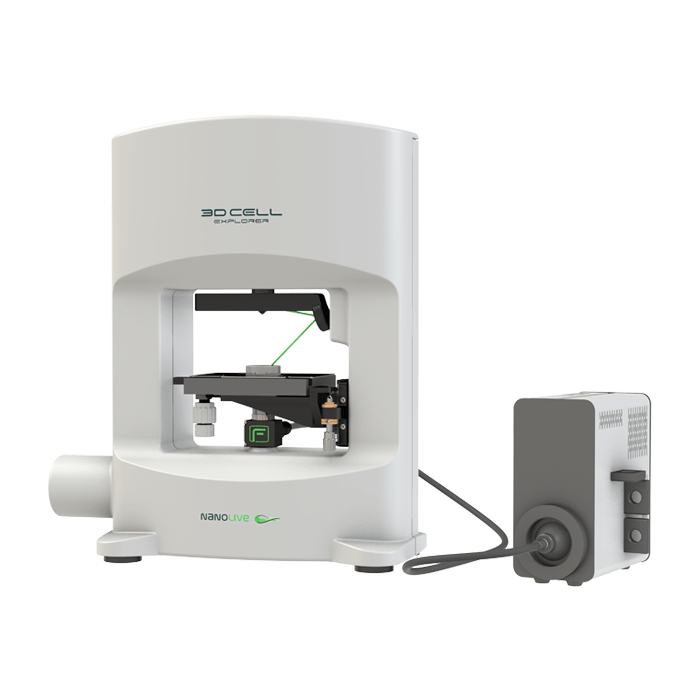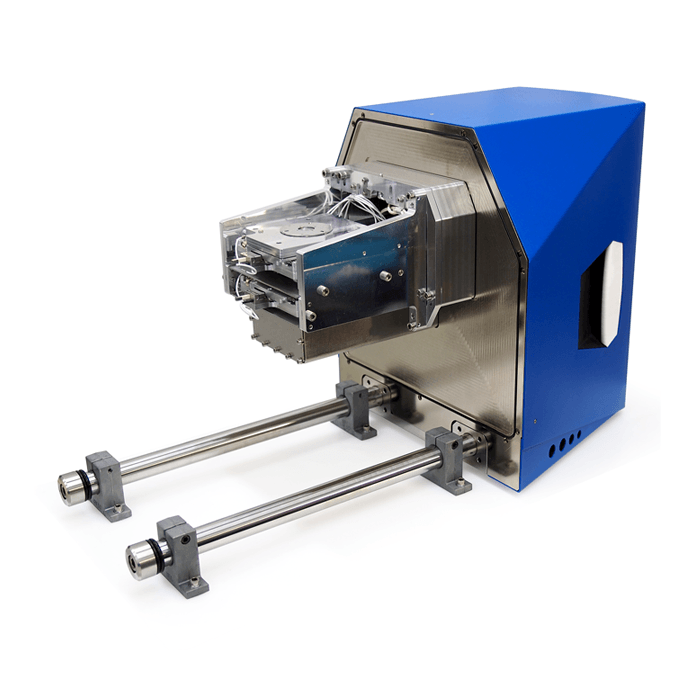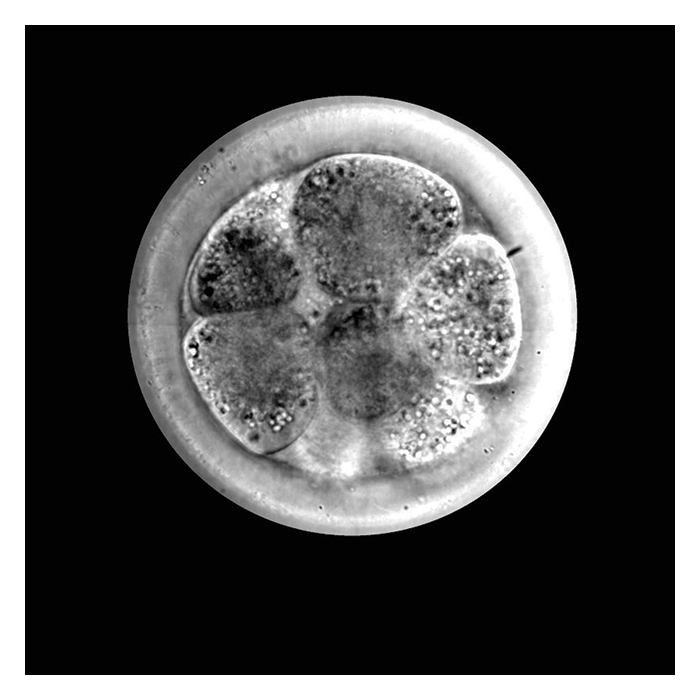
CellVista GLIM™
Acquire mass and volume information in real time with label-free, quantitative imaging for live cells, assays, tissues and organoids.

GLIM is an upgrade for your existing microscope that enables label-free, quantitative imaging for live cells, assays, tissues and organoids.
-
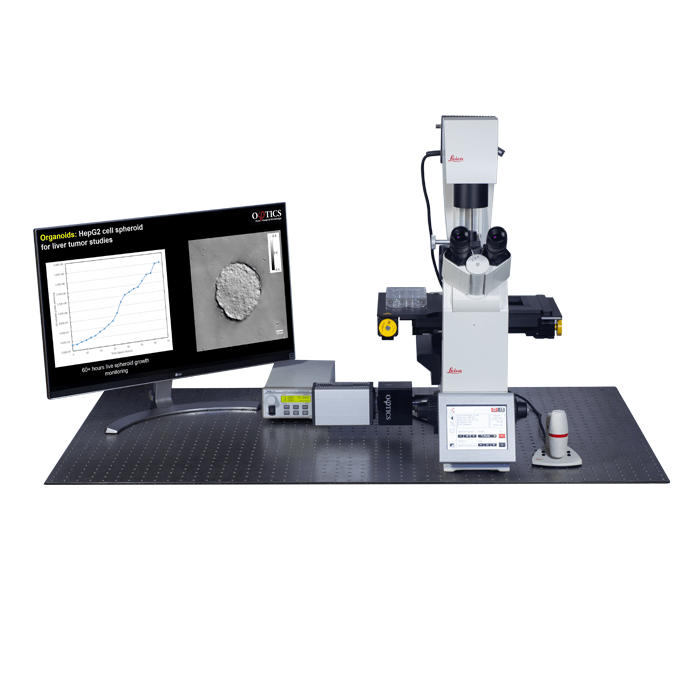
Key Features
- Quantitative Phase Imaging - Measure thickness and dry mass in large samples, non-invasive: no sample preparation.
- Designed for large specimens - Resolves samples with thickness from 50 µm – 350 µm+
- Multidimensional imaging at high speed - Up to 4D imaging (multichannel, time-lapse, Z-stack, tiling) at up to 12 fps
- Multichannel imaging - Seemless overlay of other microscope channels (ie fluorescence).
- Programmable 2D and 3D scanning - Using the microscopes full range of motion
- Integrates with existing microscopes - All major brands
The CellVista GLIM™ module is connected to the imaging port of a Phase Contrast microscope, with a camera connected at its output. The microscope separates the illumination into a sample and a reference beam with a phase shear between them that pass through the sample and are collected at the imaging port. The beams pass through the CellVista GLIM™ module where an electro-optical system introduces four accurately controlled phase delays between them. The CellVista GLIM™ camera acquires an intensity image for each phase delay. The intensity images are combined by interference and a recombination algorithm outputs the quantitative OPL map of the entire field of view of the microscope objective. The OPL map is converted to specimen height/volume, dry mass, and refractive index.
CellVista GLIM™ rejects much of the multiple scattering contributions present in an optically thick specimen (e.g. embryos and 3D organoids): the two imaging beams are always equal in power, and suffer equal degradation (that is, the same background noise) because of multiple scattering in the sample such that they interfere with high contrast.
For more on CellVista GLIM™ check out this Nature paper.
GLIM Paper – Nature Communications (2017) https://www.nature.com/articles/s41467-017-00190-7
Label Free Cellular Microscopy with Quantitative Phase Imaging (QPI)
Quantitative Phase Imaging (QPI) is a new imaging channel that measures the intrinsic properties
(dry mass, refractive index) and topography of biological specimens. Phi Optics’ QPI is the fastest
and most accurate imaging of live cell and tissue cultures, providing contrast and resolution
where regular microscopy fails or kills the specimens. Phi Optics QPI upgrades your existing
microscopes to enable 4D non-destructive, quantitative assays on any range of time, with
subcellular resolution.
Applications
GLIM technology offers high contrast imaging of optically thick specimens. Example applications include:
- 3D morphology of embryos and cell clusters
- 3D organoid assays with single cell resolution
- Animal and plant histology
- Microscopic animal models
-
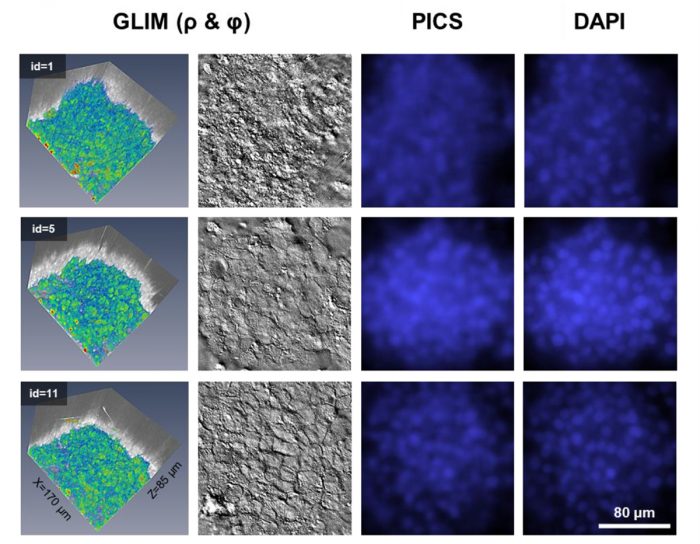
Phase Imaging with Computational Specificity (PICS)
Phase Imaging with Computational Specificity (PICS) is a new feature of Phi Optics QPI instruments CellVista GLIM™ and CellVista SLIM™ modules that enables various 2D (monolayer) and 3D (organoids) assays to have the accuracy and specificity of regular fluorescence but without the inconveniences associated fluorescent imaging of phototoxicity and photobleaching.
Click here to learn more about PICS.
Details about this new imaging capability was also published in Nature.
-
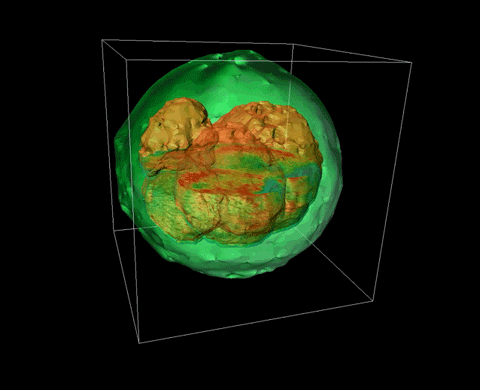
Bovine Embryo
Bovine embryo imaged using Phi Optics gradient light interference microscopy CellVista GLIM™.

- All
- Biological Microscopy
- Confocal Microscopy
- Digital Microscopy
- Electron Microscopy
- Fluorescent Microscopy
- Light Microscopy
- Live Cell Imaging
- Microscopy
- Multiphoton Microscopy
- Pre-clinical Imaging
- Protein
- Quantitative Phase Imaging
- Super Resolution Microscopy
- TEM
- Tomographic Microscopy

